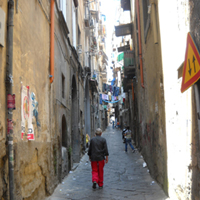Urban Mobility and Polluting Emissions: Impacts on Public Welfare
Abstract
This article introduces the problem of assessing urban effects of air pollution produced by road traffic and it is oriented to individualize the "critical" areas where it is necessary to intervene in order to optimize the security levels for public wellbeing. The research is targeted to assess the effects of pollutant emissions, particularly of PM10, on human health by testing methodology at three different territorial levels (regional, provincial, municipal). In this article we refer particularly to the city of Benevento and we propose to point out a methodology for identifying critical infrastructure where it is necessary to restrict vehicular traffic. The target of this study is the identification of urban ambit characterized by high levels of risk to public health arising from the mobility vehicle. Prerequisite is the consideration that the effects of pollutants are linked with urban morphology in particular the physical structure of the road network. In other word, within the city it is possible to identify "critical channels" where safety levels for human health are strongly compromise by their physical structure. The test has been referred to Benevento by using GIS to identify urban areas where high levels of risk due to pollutant emission concentrate. Gis has been projected to allow both the identification of “maximum risk areas” and the "critical channel" within the city.Downloads

Copyright (c) 2014 Tema. Journal of Land Use, Mobility and Environment

This work is licensed under a Creative Commons Attribution 4.0 International License.
Authors who publish in this journal agree to the following:
1. Authors retain the rights to their work and give in to the journal the right of first publication of the work simultaneously licensed under a Creative Commons License - Attribution that allows others to share the work indicating the authorship and the initial publication in this journal.
2. Authors can adhere to other agreements of non-exclusive license for the distribution of the published version of the work (ex. To deposit it in an institutional repository or to publish it in a monography), provided to indicate that the document was first published in this journal.
3. Authors can distribute their work online (ex. In institutional repositories or in their website) prior to and during the submission process, as it can lead to productive exchanges and it can increase the quotations of the published work (See The Effect of Open Access)
